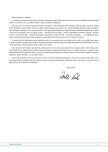CHRONIC PELVIC PAIN SYNDROME AND CURRENT TREATMENT OPTIONS
Authors:
M. Urban; J. Heráček
Authors‘ workplace:
Androgeos privátní urologické a andrologické centrum
; Urologická klinika 3. LF UK v Praze a FNKV
Published in:
Urol List 2010; 8(3): 66-69
Overview
Treatment of pelvic pain is a complex phenomenon and depends on the clinical experience. It requires individual approach including detailed analysis of possible etiologies. However this approach is not feasible in normal urological practice. Better chance for treatment success offer specialized centers focusing on the chronic pain syndrome (CPP). Recently used mini-invasive techniques show relatively good outcomes especially in patients refractory on traditional treatment. Mini-invasive techniques combined with traditional treatment focused on the most probable etiologies represent some hope in the CPP treatment modalities.
Keywords:
chronic: pelvic pain syndrome, treatment, mini-invasive techniques
Sources
1. Abrams P, Cardozo L, Fall M et al. The standardisation of terminology of lower urinary tract function: report from the Standardisation Subcommittee of the International Continence Society. Am J Obstet Gynecol 2002; 187: 116–126.
2. Merskey H, Bogduk N. Classification of Chronic Pain. Descriptions of Chronic Pain Syndromes and Definitions of Pain Terms. IASP Press 2002.
3. Krieger JN, Nyberg L Jr, Nickel JC. NIH consensus definition and classification of prostatitis. JAMA 1999; 283(3): 236–237.
4. Blacklock NJ. Anatomical factors in prostatitis. Br J Urol 1974; 46:47-54. Andersen JT. Treatment of prostatodynia. In: Nickel JC, ed. Textbook of Prostatitis. London: ISIS, 1999.
5. Nickel JC. Effective office management of chronic prostatitis. Urol Clin North Am 1998; 25(4): 677–684.
6. McDonald JS,Spigos DG. Computed tomografy-guided pudendalblock for treatment of pelvic pain due to pudendal neuropathy.Obstet Gynecol 2000; 95(2): 306–309.
7. Robert R, Labat JJ, Bensignor M et al. Decompression and transposition of the pudendal nerve in pudendal neuralgia:A randomized contolled trial and long-term evaluation. Eur Urol 2005; 47(3): 403–408.
8. Robert R, Prat-Pradal D, Labat JJ et al. Anatomic basis of chronic perianal pain:role of the pudendal nerve. Surg Radiol Anat 1998, 20(2): 93–98.
Labels
Paediatric urologist UrologyArticle was published in
Urological Journal

2010 Issue 3
Most read in this issue
- CHRONIC PELVIC PAIN SYNDROME AND CURRENT TREATMENT OPTIONS
- CHANGING MANAGEMENT OF CHRONIC PROSTATITIS/CHRONIC PELVIC PAIN SYNDROME
- OVERACTIVE BLADDER IN CHILDREN AND ADULT PATIENTS
- CHRONIC PELVIC PAIN (CPPS): ANATOMICAL CONSIDERATIONS, PATHOPHYSIOLOGICAL MECHANISMS, CONFUSABLE DISEASES, THE PHENOMENON OF CHRONICITY. BLADDER PAIN SYNDROME
